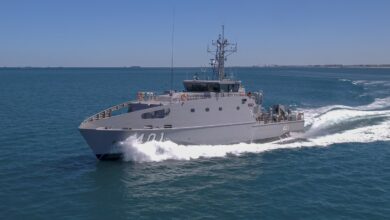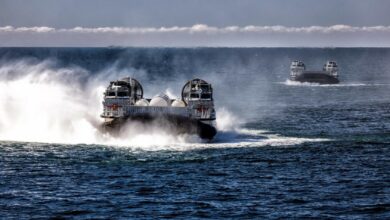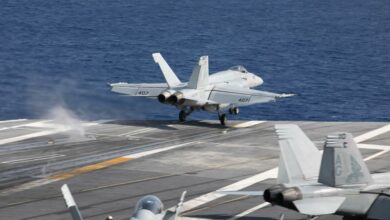Modified US Navy Fast Transport Ship Undergoing Autonomous Function Trials
A modified US Navy Spearhead-class expeditionary fast transport (EPF) ship is undergoing trials to assess its shipboard configuration for autonomous function.
The trials have demonstrated that a large vessel can become a self-driving platform.
After the trials, the ship “will be the first fully operational US naval ship to possess autonomous capability, including the ability to operate autonomously in a commercial vessel traffic lane,” said Sealift Program Executive Office (PEO) Ships Manager Tim Roberts.
The future USNS Apalachicola (EPF 13) is being developed under a $44 million contract signed in June 2021 and is expected to be delivered to the US Navy later this year.
Unmanned Logistics Prototype Trials
The test event, dubbed the Unmanned Logistics Prototype trials, aims to improve the behavior and other complexities for military operations, navigation in populated naval regions, and control between manned and unmanned modes of the ship’s integrated autonomous systems.
“This testing is a game changer and highlights that there is potential to expand unmanned concepts into existing fleet assets,” Roberts explained.
Additional examinations will increase difficulties such as night navigation and extreme weather conditions.
The trials included industry partners Austal USA, L3 Harris, and General Dynamics, and several US Navy organizations.
The Future USNS Apalachicola (EPF 13)
The USNS Apalachicola (EFP 13) is a 103-meter (337 feet), all-aluminum catamaran with a 1,800 square-meter (19,400 square feet) cargo deck, over 300 seating capacity, and a medium-lift chopper deck.
Austal USA is currently working on the USNS Apalachicola (EPF 13) and the USNS Cody (EPF 14) in its Alabama Shipyard.
EPF vessels are built for rapid intra-theater equipment and personnel transport. Their shallow draft design and high nautical speed (35-40 knots) enable a logistical advantage without shore-based infrastructures.












